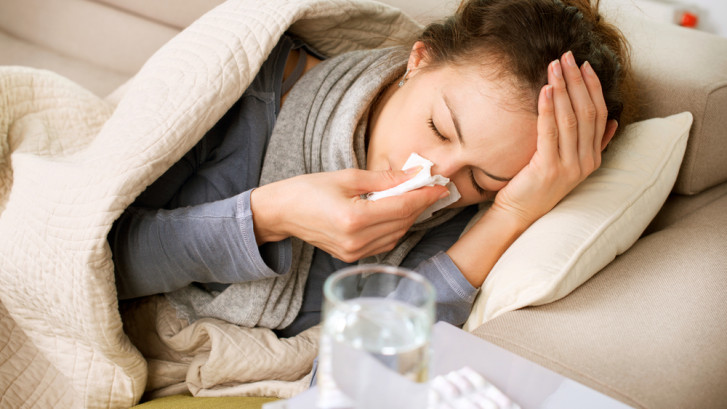If you’ve been feeling down, sleepy, or hopeless, even with all the holiday merriment going on around you, our primary care concierge doctors in Jupiter want you to know you’re not alone. Health experts estimate that seasonal affective disorder (SAD), or the “winter blues,” affects about five percent of the U.S. population.
SAD is more than just the “winter blues,” according to the American Psychiatric Association (APA). The symptoms can be distressing and overwhelming, and can interfere with daily functioning, the APA reports.
Affecting more than 10 million Americans, symptoms of the condition usually begin in October or November and begin to subside in March or April. However, some patients don’t feel fully back to normal until early May.
SAD may begin at any age, but it typically starts when a person is between the ages of 18 and 30 and seems to affect women more than men.
Symptoms
The APA lists the following symptoms associated with SAD:
- fatigue, even with excessive amounts of sleep
- weight gain associated with overeating and carbohydrate cravings
- feelings of sadness or depressed mood
- marked loss of interest or pleasure in activities once enjoyed
- loss of energy
- an increase in restless activity (e.g., hand-wringing or pacing)
- slowed movements and speech
- feeling worthless or guilty
- trouble concentrating or making decisions
- thoughts of death or suicide or attempts at suicide.
The severity of such symptoms can vary from person to person, and not everyone will experience all these symptoms.
Likely Causes
While no one is certain what causes SAD, the lower amounts of sunlight in fall and winter are believed to lead to a biochemical imbalance in the brain, impacting the body’s circadian clock, which triggers sleep and wake cycles.
This process affects the output of serotonin, the so-called “mood” hormone. Studies have shown that the circadian-related output of serotonin drops markedly with the decrease in light during the winter. It also increases the level of melatonin, a hormone secreted by the pineal gland that regulates the sleep cycle.
The cause of SAD may have an ancient survival connection, as humans learned to restrict activity when food sources were scarce. The tendency may still be hardwired into our biology, and people can experience symptoms on a sliding scale from barely noticeable to full-blown clinical depression.
Risk factors include a family history of SAD or another form of depression, having major depression or bipolar disorder, and having lower levels of vitamin D. Vitamin D is believed to promote serotonin production.
Treatment
SAD can be effectively treated in a number of ways, including through the use of light-box therapy, which employs specially built full-spectrum lamps to alleviate symptoms. The NIMH reports that this type of therapy has been a mainstay for treating SAD since the 1980s.
In this treatment, a person sits in front of a very bright lightbox (10,000 lux) every day for about 30 to 45 minutes, usually first thing in the morning, from fall to spring. The light boxes, which are about 20 times brighter than ordinary indoor light, filter out the potentially damaging UV light, making this treatment safe for most people.
However, those with certain eye diseases or people taking certain medications that increase their sensitivity to sunlight might need other treatment types.
Other approaches include the use of antidepressants such as Paxil and Prozac, or cognitive behavioral therapy (CBT), a type of talk therapy aimed at helping individuals learn how to cope with difficult situations. In addition, the U.S. Food and Drug Administration (FDA) has also approved another type of antidepressant specifically for SAD: bupropion. In extended-release form, it is taken daily from fall to spring to prevent major depressive episodes.
Self-care
Meanwhile, there are steps you can take to help mitigate milder cases.
1. Stay active outdoors
Exposure to early morning light has been shown to be the most effective at reducing symptoms, as has regular exercise. An early morning walk or run might be all you need to help alleviate your symptoms.
2. Let in the light
If you can’t get outside, at least let the sunshine in as much as possible. Open blinds and drapes first thing in the morning, and keep them open all day. If you can, arrange your home or office so you’re exposed to as much sunlight as possible during the day (but remember that the sun’s harmful UV rays can penetrate glass, so use sunscreen if you’re actually sitting in the sun all day).
3. Eat right
Simple carbs and sugars wreak havoc with your blood sugar, thereby affecting your mood. Lean meats, fruits, vegetables, nuts, and complex carbohydrates will help to keep your brain functioning properly.
4. Take it easy
Don’t try to do too much, which can add to feelings of being overwhelmed. Do what you can, and postpone the rest, or ask friends and family for help with your to-do list.
5. Stay connected
Studies have shown that connecting with others helps improve mood: volunteering, getting together with friends and family, and participating in group activities, are some possibilities.
If your symptoms are interfering with your daily life, let us know. We can help evaluate your symptoms and recommend the right therapy.



